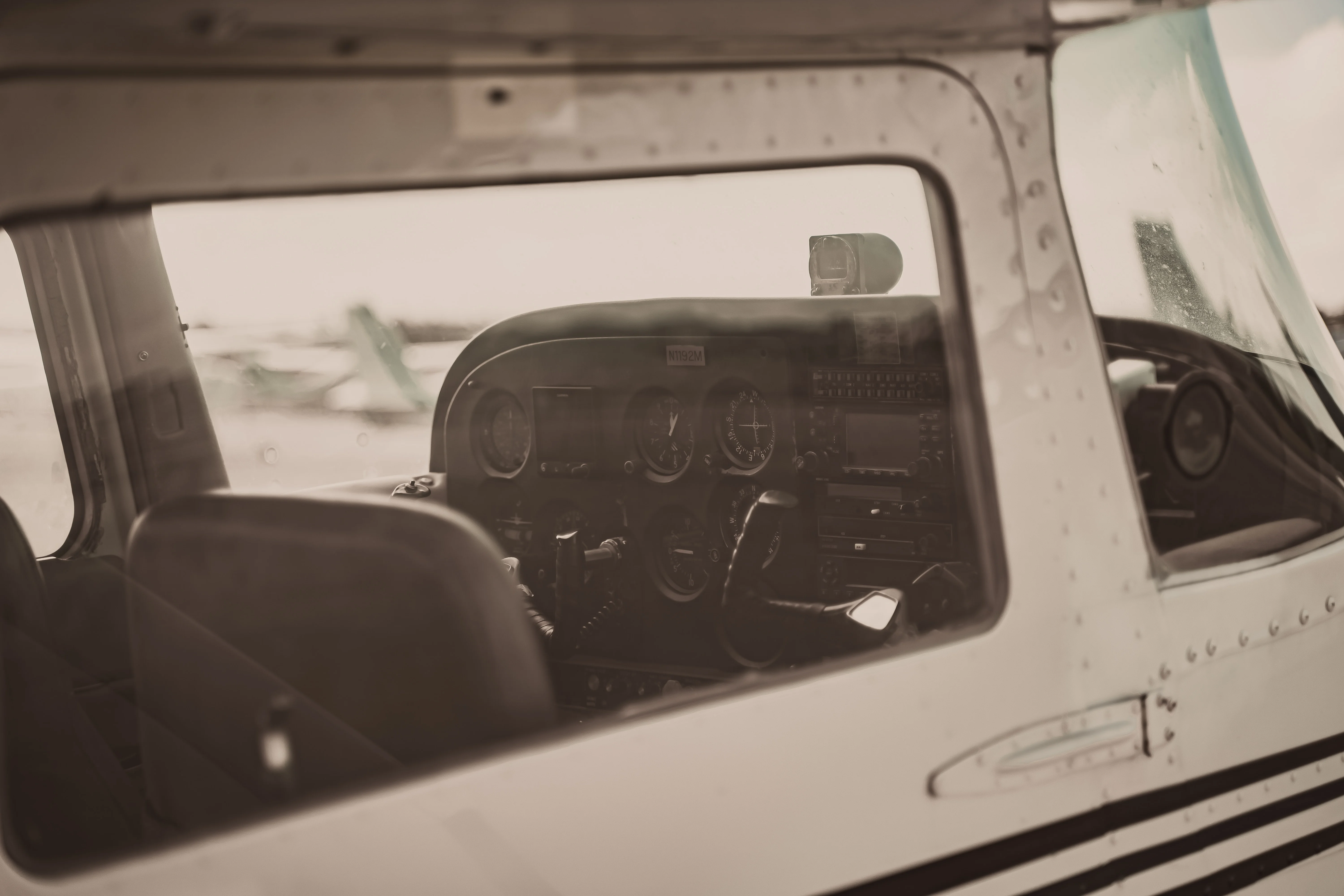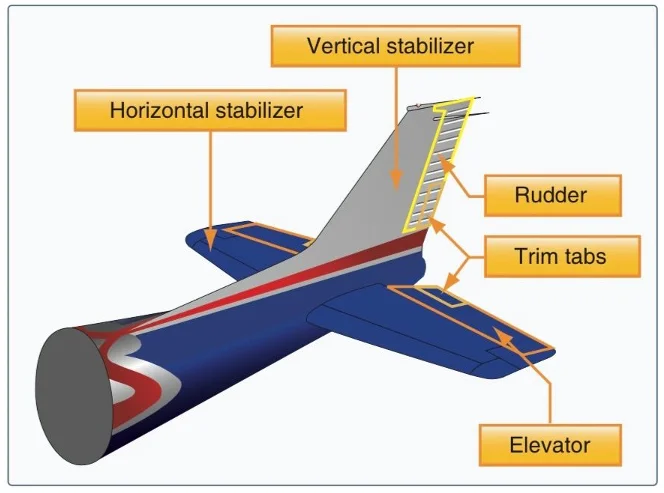Although aircraft may be designed for a variety of different purposes, most of them have the same major components. The major components of an aircraft typically include a fuselage, wings, an empennage, landing gear, and a powerplant.


Fuselage
The fuselage is the body of the aircraft and typically holds the crew, passengers, and cargo. The fuselage connects the wings and tail. Older aircrafts were typically designed with a fuselage of open trusses, usually of wood, steel, or aluminum. Today, newer aircrafts are typically constructed in a single shell design.

Wings
Wings are the airfoils on each side of the fuselage. They are the primary lifting surface of the aircraft and support it inflight. There are a variety of wings designs, shapes, and sizes used by aircraft manufacturers. Wings can be attached to the top, middle, or lower portion of the fuselage. Wings attached to the top are referred to as high-wing, wings attached to the middle are referred to as mid-wing, and wings attached to the lower portion of the fuselage are referred to as low-wing. The number of wings may vary. An aircraft with only one set of wings are called monoplanes, while aircrafts with two sets of wings are referred to as biplanes.
Most high-wing aircraft have external braces (also known as wing struts) that transmit the flight and landing loads from the wings to the fuselage. Aircraft with external braces or wing struts are known as semi-cantilever. Most low-wing airplanes have a full cantilever wing singed to carry the flight and landing loads without the additional support of external braces.
The wing is primarily composed of spars, ribs, and stringers, and reinforced by trusses or tubing. In most modern airplanes, the fuel tanks are mounted inside flexible containers inside the wing’s structure.
Ailerons & Flaps
The rear or trailing edges of the wing have two types of secondary control surfaces; ailerons and flaps. Ailerons typically run from about the midpoint of each wing towards the outside tip of the wing. Ailerons move upwards and downwards and cause the airplane to move about the longitudinal (roll) axis. Flaps usually extend outwards from the fuselage to about the midpoint of the wing. Inflight, flaps are typically flush with the wing’s surface. Flaps extend downward to increase the lifting force of the wings.
Empennage
The empennage is the entire tail group and consists of the vertical stabilizer and horizontal stabilizer. The rudder is a secondary control surface located on the rear of the vertical stabilizer. It is used to yaw the aircraft’s nose left and right along the vertical axis. The elevator is attached to the horizontal stabilizer and is used to pitch the nose of the airplane up and down along the lateral axis. Trim tabs are small moveable portions of the trailing edge of the control surfaces and are used to reduce control pressure. Trim tabs are typically located on the ailerons, rudder, and elevator.
Not all empennage designs require the use of an elevator. A stabilator incorporates a one-piece horizontal stabilizer that pivots from a central hinge point and is moved using the control wheel.

Landing Gear
The landing gear supports the aircraft when it is parked, taxiing, taking off, or landing. There are different types of landing gear such as floats or skis, but the most common is wheels. There are two types of landing gear designs, one in which there are two main wheels underneath the fuselage, and one wheel is located in the front - this is called a nose wheel or tricycle landing gear. The other variation is two main wheels underneath the fuselage and one wheel in the back. This is referred to as a tail wheel. Most aircraft are steered while the wheels are on the ground through the use of rudder pedals which move the nose or tailwheel. Some aircraft are steered through differential braking.
Powerplant
The powerplant is typically composed of both the engine and the propeller. The engine’s primary function is to provide the power necessary with which to turn the propeller. As secondary functions, it provides a vacuum for some flight instruments, generates electrical power for equipment such as radios, and also provides a source of heat for pilots and passengers in many single-engine aircraft.
The propeller is mounted on the front of the engine and translates the rotating force that the engine produces into thrust. This forward-acting force helps move the aircraft though the air. Put simply, the propeller is an airfoil that rotates through the air, forming a high-pressure area at the back of the propeller, while producing an area of low pressure in front of the propeller, pulling the aircraft through the air.
Propellers are impacted in two significant ways that influence its effectiveness; angle and pitch. The angle refers to the angle of a propeller blade with reference to the hub of the propeller. The amount of the lift that the propeller blade produces is directly related to the angle of attack (AOA) at which the relative wind meets the angle of the propeller blade. The pitch is the distance that a propeller would travel in one revolution if it were turning in a soft solid (think of a screw rotating through a piece of wood).
[Editor’s Note]: All images taken from the FAA Pilot’s Handbook of Aeronautical Knowledge.
Written by Air Power, Inc. Engine Sales Representative, Joshua Denton.
